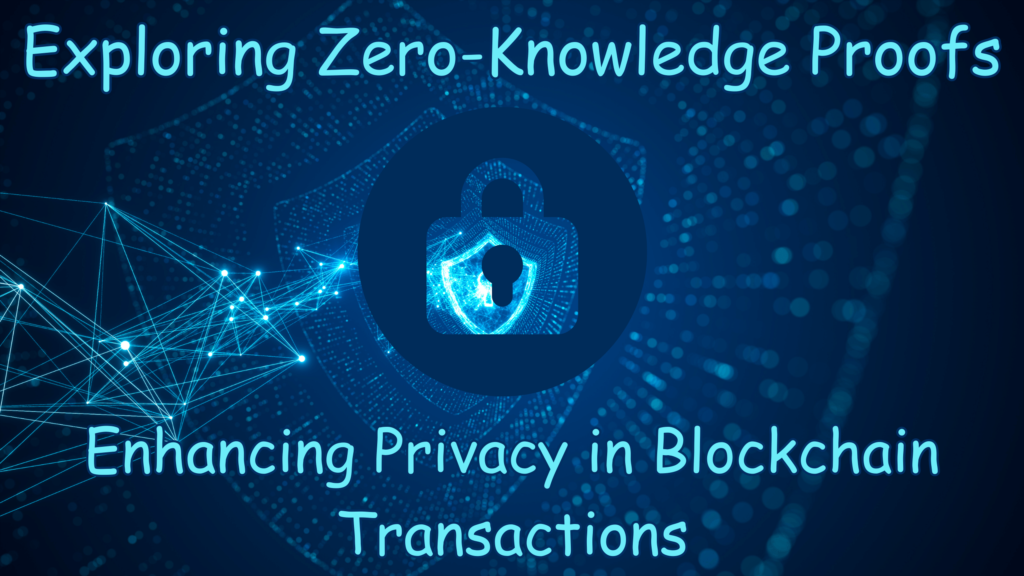Blockchain technology, a term often synonymous with cryptocurrencies like Bitcoin, has been making waves in various industries for its potential to revolutionize the way we conduct transactions. At its core, blockchain is a decentralized, digital ledger that records transactions across multiple computers so that any involved record cannot be altered retroactively, without the alteration of all subsequent blocks.
However, a common misconception is that blockchain technology is only useful for cryptocurrencies. While it’s true that blockchain was initially developed to support Bitcoin, the technology itself has a multitude of applications beyond cryptocurrencies. Its potential extends far beyond the realm of finance, offering solutions for any sector that could benefit from transparent, secure, and decentralized data management.
In the following sections, we will explore how blockchain technology is being applied in various fields such as supply chain management, healthcare, finance, and digital identity, demonstrating that the potential of blockchain indeed goes beyond cryptocurrencies. Stay tuned!
Understanding Blockchain
Blockchain technology is a type of distributed ledger technology that allows data to be stored globally on thousands of servers. Here’s a simplified explanation of how it works:
- Transaction: Every transaction starts with a user who initiates the process. This could be a cryptocurrency exchange, a data transfer, or any other type of transaction.
- Block Creation: Once a transaction is initiated, it is grouped together in a block with other transactions that have occurred in the last ten minutes and sent out to the entire network.
- Verification: Miners (nodes in the network) then validate the transactions within the block. They do this by solving complex mathematical problems.
- Adding to the Chain: Once the block of transactions has been verified, it is added to the blockchain. The block is given a hash (a unique string of numbers and letters), timestamped, and added to the blockchain in a linear, chronological order.
Now, let’s look at the key features of blockchain:
- Decentralization: Unlike traditional databases, where data is stored on a central server, blockchain operates on a network of computers, each having an identical copy of the blockchain. This means that no single entity has control over the entire network, making it decentralized.
- Transparency: Every transaction on the blockchain is visible to anyone who has access to the system. This transparency can help reduce fraud and corruption.
- Security: Once a block is added to the blockchain, it is extremely difficult to change or tamper with. This immutability makes blockchain a secure way to store and transfer data.
These features make blockchain a powerful tool for a variety of applications beyond just cryptocurrencies. In the following sections, we will explore some of these applications.
Blockchain Beyond Cryptocurrency
While blockchain technology is most commonly associated with cryptocurrencies, its potential applications extend far beyond this realm. The unique properties of blockchain – decentralization, transparency, and security – make it a powerful tool for solving complex problems in various fields. Here are some areas where blockchain technology is making a significant impact:
- Supply Chain Management: Blockchain can bring unprecedented transparency to supply chains, helping to track the journey of products from the manufacturer to the consumer. This can help prevent fraud and counterfeiting, and ensure the authenticity of products.
- Healthcare: In the healthcare sector, blockchain can secure patient data, manage drug supply chains, and facilitate research collaboration, among other applications.
- Finance: Beyond cryptocurrencies, blockchain is revolutionizing traditional finance systems. It enables faster, cheaper, and more transparent peer-to-peer transactions, and powers innovations like Decentralized Finance (DeFi).
- Digital Identity: Blockchain can provide a secure and self-sovereign identity system, giving individuals control over their personal data.
- Real Estate: By tokenizing real estate assets on the blockchain, buying, selling, and trading property can become more efficient and transparent.
- Voting Systems: Blockchain can make voting systems more secure and transparent, potentially eliminating election fraud and increasing voter turnout.
These are just a few examples of how blockchain technology can be applied beyond the realm of cryptocurrencies. In the following sections, we will delve deeper into each of these applications, exploring how blockchain is revolutionizing these fields.
Blockchain in Supply Chain
Supply chains are complex networks involving multiple parties, from manufacturers and distributors to retailers and consumers. This complexity often leads to a lack of transparency, inefficiencies, and fraud. Here are some common problems in current supply chain models:
- Lack of Transparency: It’s often difficult to trace a product back to its origin. This lack of transparency can lead to counterfeiting and fraud.
- Inefficiencies: Traditional supply chains often involve manual processes and paperwork, leading to delays and errors.
- Fraud: Without a secure and transparent system, supply chains are vulnerable to fraud at various stages.
Blockchain technology can address these issues and revolutionize supply chain management:
- Transparency: Blockchain’s decentralized and immutable nature allows for a transparent and traceable record of all transactions in the supply chain. This can help verify the authenticity of products and prevent fraud.
- Efficiency: Blockchain can automate and streamline supply chain processes, reducing paperwork and errors, and speeding up transactions.
- Security: The cryptographic nature of blockchain makes it secure against fraud and tampering.
There are already real-world examples of blockchain being used in supply chains:
- De Beers: The diamond company uses blockchain to track the journey of diamonds from the mine to the consumer, ensuring they are conflict-free.
- Walmart: The retail giant uses blockchain to trace the origin of food products, improving food safety.
- Maersk: The shipping company uses blockchain to streamline its supply chain processes, reducing paperwork and increasing efficiency.
These examples demonstrate the potential of blockchain in transforming supply chains, making them more transparent, efficient, and secure. In the next section, we will explore how blockchain can revolutionize the healthcare sector.
Blockchain in Healthcare
Healthcare is a sector that deals with sensitive and critical data on a daily basis. However, there are several challenges in healthcare data management:
- Data Silos: Patient data is often stored in isolated systems within different healthcare providers, making it difficult to share and access information.
- Security: Healthcare data is highly sensitive, and breaches can have serious consequences. Traditional systems are often vulnerable to attacks.
- Interoperability: Different healthcare systems often have trouble communicating with each other due to the use of different standards and protocols.
Blockchain technology can play a significant role in addressing these issues:
- Decentralization: Blockchain can eliminate data silos by storing patient data on a decentralized network, making it accessible to any authorized entity.
- Security: The cryptographic nature of blockchain makes it highly secure against breaches. Moreover, the immutability of blockchain ensures that the data cannot be tampered with.
- Interoperability: Blockchain can enable interoperability among different healthcare systems by providing a standard protocol for data exchange.
There are already several examples of blockchain applications in healthcare:
- MediLedger: This project uses blockchain to track and verify prescription medicines, preventing counterfeit drugs from entering the supply chain.
- Medicalchain: This platform uses blockchain to store patient health records, allowing patients to control who has access to their data.
- Robomed Network: This is a blockchain-based medical network that provides effective patient care through a smart contract.
These examples demonstrate the potential of blockchain in revolutionizing healthcare data management, making it more secure, efficient, and patient-centric. In the next section, we will explore how blockchain can transform the finance sector.
Blockchain in Finance
While blockchain is the underlying technology for cryptocurrencies, its potential in the finance sector extends far beyond this. Here’s how blockchain can revolutionize traditional finance:
- Efficiency and Speed: Traditional financial systems often involve intermediaries and can take days to complete transactions, especially for cross-border payments. Blockchain can streamline these processes, enabling faster and more efficient transactions.
- Transparency and Security: Blockchain’s immutable and transparent nature can help prevent fraud and bring more transparency to financial transactions.
- Smart Contracts: These are self-executing contracts with the terms of the agreement directly written into code. They automatically execute transactions when predefined conditions are met, reducing the need for intermediaries.
- Decentralized Finance (DeFi): This is a new form of finance that uses blockchain to decentralize financial intermediaries. DeFi offers several services like lending, borrowing, and trading on a decentralized platform, providing more access and control to the users.
Here are some examples of blockchain applications in finance:
- Ripple: Ripple uses blockchain technology to enable international money transfers. It offers fast, low-cost international transactions.
- Ethereum: Ethereum’s platform is widely used for creating and executing smart contracts, enabling developers to build and deploy decentralized applications (dApps).
- Compound: Compound is a DeFi lending protocol that allows users to earn interest on their cryptocurrencies by depositing them into one of several pools supported by the platform.
These examples demonstrate the transformative potential of blockchain in the finance sector, offering solutions that are not only faster and more efficient, but also more transparent and secure. In the next section, we will explore how blockchain can provide a secure and self-sovereign digital identity system.
Blockchain in Digital Identity
In the digital age, identity verification is a critical aspect of many online transactions and interactions. However, traditional methods of managing digital identities often involve centralized databases, which can be vulnerable to hacking, identity theft, and privacy breaches. Here’s why a secure digital identity is important:
- Security: A secure digital identity can protect users from identity theft and fraud.
- Privacy: Users should have control over their personal data and who has access to it.
- Access: A digital identity can provide access to a range of online services, from banking and healthcare to e-commerce and social media.
Blockchain technology can provide a solution for secure and self-sovereign digital identity:
- Decentralization: Blockchain can store identity data across a network of computers, reducing the risk of a single point of failure.
- Control: With blockchain, users can control their own identity data. They can choose who has access to their data and for what purpose.
- Security: Blockchain’s cryptographic security features can protect identity data from hacking and fraud.
Here are some examples of blockchain applications in digital identity:
- uPort: This platform provides a self-sovereign identity system. Users can register their own identity on Ethereum, send and request credentials, sign transactions, and securely manage keys and data.
- Civic: This secure identity platform allows users to control and protect their identities using blockchain. Users can verify their identity in real time, without the need for traditional physical or digital proof.
- Sovrin: This is a decentralized, global public utility for self-sovereign identity. It allows individuals and organizations to create portable, self-sovereign digital identities that they own and control.
These examples demonstrate how blockchain can revolutionize digital identity, providing a more secure, private, and user-centric approach.
Future of Blockchain
Blockchain technology, while already transformative in many sectors, still has a vast untapped potential. Here are some potential future applications of blockchain:
- Internet of Things (IoT): Blockchain could provide a secure and scalable framework for communication between IoT devices.
- Government Systems: Blockchain could be used to make government operations more efficient, such as secure document verification systems and transparent public finance management.
- Education: Blockchain could be used for verification of qualifications and academic credentials, reducing fraud and making it easier to transfer credits between institutions.
- Charity: Blockchain could bring transparency to the charity sector, ensuring donations reach the intended recipients.
Despite its potential, blockchain technology also faces several challenges and limitations:
- Scalability: The current leading blockchain networks face issues with scaling up and processing large numbers of transactions quickly.
- Energy Consumption: Particularly for blockchains using Proof of Work (like Bitcoin), the energy consumption is significant, leading to concerns about environmental impact.
- Regulation and Compliance: As a new technology, blockchain faces a lack of clear regulations in many jurisdictions, which can make its adoption risky for businesses.
- Complexity and User Experience: For many people, blockchain and cryptocurrencies are complex and hard to understand, hindering widespread adoption.
While these challenges are substantial, ongoing research and development efforts are aiming to address them. With its potential to revolutionize various sectors, blockchain technology holds a promising future. As we continue to explore and innovate, the full extent of blockchain’s potential is yet to be realized. Stay tuned for more exciting developments in this space!
Conclusion
In this article, we’ve explored the transformative potential of blockchain technology beyond its well-known application in cryptocurrencies. We’ve seen how blockchain can revolutionize various sectors such as supply chain management, healthcare, finance, and digital identity by providing solutions that are not only more efficient and transparent, but also more secure.
From ensuring the authenticity of products in a supply chain, to securing patient data in healthcare, to enabling faster and cheaper transactions in finance, to providing a secure and self-sovereign identity system, blockchain technology holds immense promise.
However, like any technology, blockchain is not without its challenges. Issues such as scalability, energy consumption, regulatory compliance, and user experience need to be addressed for blockchain to reach its full potential.
Despite these challenges, the future of blockchain looks promising. As we continue to innovate and adopt this technology, we are likely to see even more exciting applications of blockchain that could transform our world in ways we can’t even imagine yet.
So, let’s keep exploring, innovating, and pushing the boundaries of what’s possible with blockchain technology. The journey of blockchain is just beginning, and the best is yet to come! Stay tuned for more exciting developments in this space.





